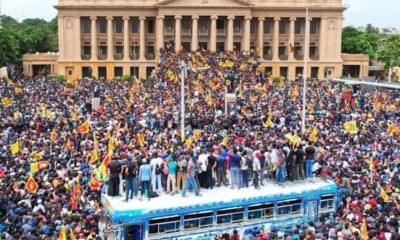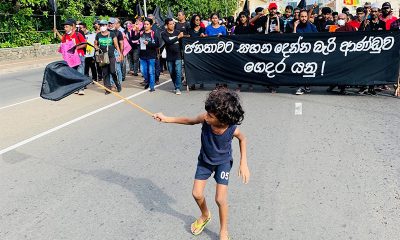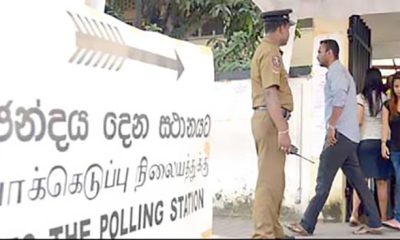Opinion
Sri Lankan democracy enters new phase of forced retreat
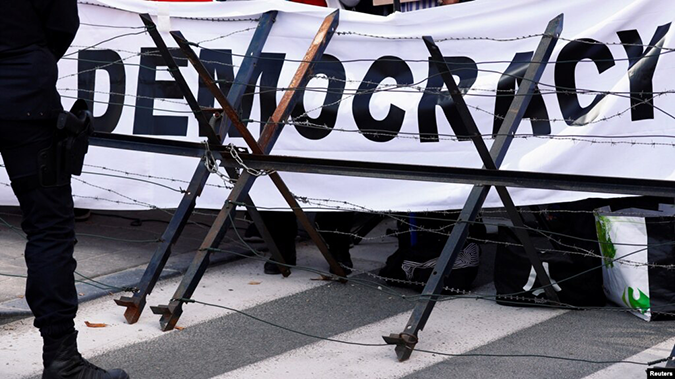
Text of the speech delivered by
Prof. Jayadeva Uyangoda
at the launch of the book,
Democracy and Democratization in Sri Lanka: Paths, Trends and imaginations, September 09, 2023, at Kamatha Cultural Center Auditorium, BMICH. Prof. Uyangoda is the Editor of this two-volume publication.
I have no doubt at all that the Chairperson of the BCIS, the Board of Academic Affairs, the BCIS management, the chapter contributors, and the BCIS staff are delighted to see the two volumes of Democracy and Democratization in Sri Lanka: Paths, Trends and imaginations in print. This, as far as I know, is the first major academic publication undertaken by the BCIS. It is Madam Chandrika Kumaratunga’s vision, initiative, guidance and unwavering support that has made this notable achievement possible.
It is she who proposed this research project’s thematic focus. She trusted the Academic Board and the research team and gave them a free hand to develop and work on it. At the same time, I apologize to her on behalf of the team for giving her a few anxious moments.
There were some delays caused partly by the general crisis triggered by the Covid-19 pandemic. Besides, the missed deadlines set during normal times were unavoidable in a project of research and publication of this magnitude, carried out in a time of exceptional crises in our society, politics and the everyday life. For me as the lead researcher and the Editor, seeing these two volumes in print is a worthy reward for two and half years of hard labour.
Context
We at the BCIS began to conceptualize and plan this publication on the experience of democracy in our country, at a time when the Sri Lankan people were on the verge of losing their democratic heritage. When the year 2019 began, the threat of a hard authoritarian system replacing a weak and battered democratic order had indeed become alarmingly real.
We at the BCIS Board of Academic Affairs and its Chairperson felt that an analysis of why a promising democracy at the time of independence had failed so abysmally is a theme warranting critical scholarly inquiry and explanation.
Thus, we launched this research and publication project on democracy and democratization in Sri Lanka in mid -2020. As I have already mentioned, the Covid-19 Pandemic of 2021 came while we had just begun our work. It interfered with our project in a variety of ways, including halting most of the research.
More significantly, the Pandemic had led to a new political process in Sri Lanka. It can be termed as accelerated backsliding of democracy spearheaded by one faction of the ruling elites. It appeared almost like the last stage of Sri Lanka’s democracy.
But, Sri Lanka’s democracy, even in retreat, has shown that it has had some magical capacity for surprises. And that is exactly what we witnessed during the Spring and Summer of 2022. Sri Lankan citizens suddenly woke up demanding more democracy than what the political elites were willing to concede.
During the Aragalaya of 2022, the ordinary people, citizens without wealth or power, rose up demanding substantive democratic reforms. The ordinary citizens in their capacity as demos began to make claims to their ownership of democracy. They also highlighted that Sri Lanka’s democracy in general and representative democracy in particular, were in a deep crisis.
It was indeed an attempt by the people, demos, to re-generate as well as re-invent democracy in Sri Lanka. That is why the citizens’ protest in 2022 diserves to be acknowledged as a significant turning point in the somewhat twisted process of democratization in Sri Lanka.
In brief, the events of 2022 provided new perspectives and critical insights immensely useful to our own work on democracy and democratization in Sri Lanka. It showed us that the ordinary people play a powerful role as an agency for democratization. Their faith in democracy is far greater than that of the elites who exploit democracy for predatory ends. That is the spirit with which these two volumes evolved.
Organisation of the Book
The book has 22 chapters divided into two volumes. They are written by Sri Lankan scholars. The chapters are lined up under six themes which are as follows:
· Democracy in South Asia and Sri Lanka: Historical and Conceptual Contexts.
· Constitutional and Institutional Crises of Democracy in Sri Lanka.
· Democracy in the Social and Ethnic margins
· Alternative Forms of Democratic Thinking and Practice
· Democracy, Discontent and Resistance
· Protests as a Vector of Democratisation.
I want to share with you very briefly what I as the Editor see as unique about this book.
· This is the first book-length scholarly work exclusively devoted to the theme of democracy in Sri Lanka.
· All chapter contributors are Sri Lankan scholars who have been witnesses to the rise, decline and attempts at regeneration of democracy.
· The analysis developed in the chapters do not belong to a specific disciplinary area of the social sciences, such as political science or constitutional law. There is a plurality of approaches from the fields of social sciences and humanities.
· The book does not advocate or campaign for any particular version or variant of democracy. It argues for the plurality of democracy as a political concept and practice. Yet all chapter contributors stand for bringing the normative ethics of equality, freedom, justice and social emancipation back to the theory and practice of democracy.
Key Messages
What are the messages that these two volumes with chapters on diverse themes convey? Let me share with you a few of them that have a direct bearing on how we should view democracy and democratization anew.
· Democracy, as an organizing principle of political and social life, has strongly local social and popular roots in Sri Lanka as it has been the case elsewhere globally: It is a historical fact that modern democracy in Sri Lanka is an aspect of the European colonial legacy: However, people of Sri Lanka from various social classes have appropriated it and made use of it for their own social interests. In this process, there has been a double transformation. While the local society and its politics has been altered by liberal democracy, the local society has also changed the idea of democracy with a substantive, though subtle, critique of liberal democracy.
This has two theoretical implications. Firstly, the Sri Lankan people have not been passive recipients of a Western, European, or colonial, political idea. Secondly, they have played an active, agential role in appropriating and transforming that European idea. This book describes it as a creative process of ‘localizing democracy.’
· Ideas and practices of democracy have preceded the invention of the language of democracy
: Genealogies of the idea and practices of democracy predates its colonial origins in Sri Lanka and South Asia. The impulses and desires for democracy have always been there everywhere and whenever there were organized political power in the form of the state in pre-modern societies too. Historical and literary evidence in ancient and pre-colonial India and Sri Lanka show that the human desire for freedom from domination, independence, autonomy and justice have been integral to the social and political struggles within organized social formations.
It has been so in the processes of state formation in ancient Sri Lanka and South Asia, as elsewhere. This is the primary historical essence of ‘universalism’ of the idea of democracy. In other words, the idea and practices of democracy have been there in many forms in pre-colonial societies long before the language of modern democracy has been invented and the impulses for democracy rigidly formalized and frozen in meaning.
· The ordinary citizens are more faithful custodians of democracy than the elites:
Democratization is not a process confined to the activities of political elites as well as governments, as wrongly assumed in the mainstream democracy studies and assessments. The Sri Lankan case studies in the book show that democratization from below, at the level of the governed and the disempowered citizens, is most important in mapping paths of democratization in Sri Lanka. This thesis is valid to democracy’s liberal variant too.
The book shows that the dispossessed and the ordinary citizens, rather than the elites, have had a greater stake at defending and consolidating democracy. They have done it through the struggles of resistance against the elite-led de-democratization. The elites have domesticated, tamed, abandoned, and even became hostile to the liberal normative content of democracy.
People have also collaborated with backed the political elites in the latter’s projects of de-democratisation. However, in crucial moments of crisis the people, demos, have defended and deepened the idea and the normative content of even liberal democracy in Sri Lanka.
· Elite capture of liberal democracy has made democracy thin
: A lesson I have learned in the course of research for this book is that liberal democracy has the unintended consequence of dividing the population of Sri Lanka into two new classes in its own way: political elites and political non-elites. This has been a general pattern in other societies too.
Sri Lanka’s process of elite-led democratic backsliding has been paralleled with the introduction of representative government early last century. Elites who benefitted from the electoral, representative democracy have appropriated the liberal democracy and used it as an instrument for consolidating their social, economic, political and familial power.
Thus, the conception of democracy associated with Sri Lanka’s ruling elites has been a thin and truncated version of liberal democracy. Its role in democratization has now come to an effective end. Sri Lankan people await a strong democracy in terms of its social roots and normative commitments.
· Popular resistance to deprivations and unjust exercise of power has deepened the normative foundations of democracy in Sri Lanka
: The instrumentalist use of representative and parliamentary democracy by the elites is only one side of the story of democratization in Sri Lanka. In contrast, there is a subaltern story of democratization too.
The Left parties, working class, peasants, the working people, women’s groups, ethnic minorities, and student movements have contributed substantively to deepening the idea, the meaning, normative goals and the social relevance of Sri Lanka’s democracy. Through social practices of demands and direct political action for substantive equality and justice, they have shown how the limits of narrowly conceived and much abused representative democracy could be reformed. Thus, Sri Lanka’s democracy is not the monopolistic possession of the political elites. It is the inheritance of a plurality of non-elite social groups as well.
· Continuing conflict between democratic backsliding and popular demand for more democracy awaits a deep-democratic resolution:
Since independence, Sri Lanka’s democracy has evolved along two contradictory trajectories. The first is the path of democratic backsliding and de-democratization chosen by the elites. The second is the path of demanding and fighting for more democracy by the subordinate and non-elite social classes, trade unions and social movements, the civil society groups, and reformist elites.
The conflict between these two opposing paths is a major facet of the crisis of democratization in Sri Lanka. Its resolution presupposes a project of re-democratisation through radically substantive political and constitutional reforms.
What is Happening to Democracy
Let us briefly reflect on what is happening to democracy in Sri Lanka at present. Sri Lankan democracy seems to have entered a new phase of forced retreat engineered by the new ruling coalition. People of Sri Lanka who have yearend for the revival of democracy find themselves caught up in a new version of what our book calls the ‘de-democratization trap.
’ Its key feature has been the incorporation of ordinary citizens as disempowered voters to a deceitful social contract crafted by the political elites. As the citizen’s protests last year and this year have shown us, that deceitful social contract is now shattered. Citizens want to replace it with a deeply democratic and authentic social contract.
Meanwhile, there seems to be two processes of polarization of the Sri Lankan society into two hostile camps. The first is between the haves and have nots in the economic and social sense. The second is the growing enmity between the majority of the citizens who crave for more democracy and a minority of the elites who thrive on no democracy. The ways in which these polarities and contradictions will play themselves out are sure to shape the nature of politics of Sri Lanka in the months and years to come.
Returning to open democracy, more executive, legislative and judicial accountability, re-democratization of the constitution, the state, the government, and parliament, guaranteeing of economic and social justice to the poor, the working people and the middle classes are essential pre-conditions for resolving these contradictions peacefully with no recourse to violence by any side. That is also a message implicit in our book.
So, students of democracy in Sri Lanka will have a politically exciting time ahead. I and my collaborators sincerely hope that these two volumes will inspire a new interest in democracy studies among the young scholars in Sri Lanka. I am also hopeful that the readers will not fail to notice that the chapters have been written by a team of Sri Lankan scholars who have a deep passion for democracy.
Finally, let me thank a few people whose contribution to the success of this initiative warrants special acknowledgement. I have already referred to the inspiring and non-interventionist leadership provided by Madam Kumaratunga. Of course, it is our team of chapter contributors who have made these two volumes actually possible. They had the patience to tolerate the constant nagging by an impatient Editor and his support staff.
I must also mention the contribution made by our two copy-editors, Madara Rammunthugala and Nicola Perera, for refining the entire text. All reveiwers of the draft chapters also deserve my grateful acknowledgement for their contribution to ensuring the scholarly quality and standards of the publication. Suresh Amuhena designed the cover for us amidst many other commitments. Dr. Minna Taheer and Ms. Isuri Wickramaratna of the BCIS extended to me their assiatance throughout this project.
The BCIS staff Board of Academic Affairs and BMICH Board of Management ensured generous institutional support for the success of this entire intiative. Finally, Mr. Vijitha Yapa and his staff undertook the task of designing, printing and selling the book. All of them are partners of this worthy achievement. There are so many others who deserve my sincere thanks, and they are mentioned by name in the ‘Acknowledgements’ section book.
Finally, I am really happy that we have Professor Pratap Bhanu Mehta, an eminent scholar from India, as our keynote speaker. I will not take any more of your time to allow you to listen to his erudite presentation.
Opinion
Turning Trade Disruptions into Opportunities
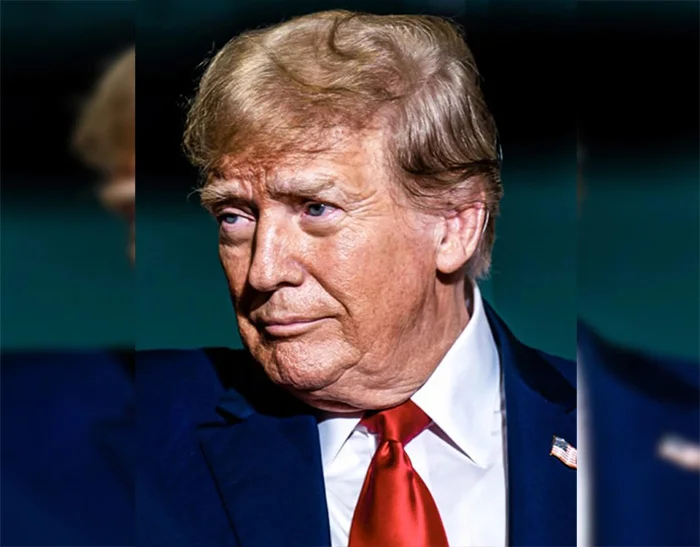
The silver lining of US tariffs for emerging economies:
 In a world that thrives on interconnectedness, the imposition of U.S. tariffs has been widely discussed through the lens of negativity—trade wars, disrupted supply chains, and market turbulence. However, this narrow view fails to account for the opportunities that arise from such disruptions. While it’s easy to focus on the immediate challenges—rising costs, retaliatory measures, and financial volatility—emerging economies, especially those in Asia and South Asia, are beginning to see a silver lining.
In a world that thrives on interconnectedness, the imposition of U.S. tariffs has been widely discussed through the lens of negativity—trade wars, disrupted supply chains, and market turbulence. However, this narrow view fails to account for the opportunities that arise from such disruptions. While it’s easy to focus on the immediate challenges—rising costs, retaliatory measures, and financial volatility—emerging economies, especially those in Asia and South Asia, are beginning to see a silver lining.
The very disruptions caused by U.S. tariffs can open up pathways for growth, innovation, and strategic realignment. Rather than being passive victims of global trade tensions, countries like Sri Lanka can leverage these moments of upheaval as catalysts for economic renewal, stronger international partnerships, and greater resilience in the face of future global shifts. The silver lining of U.S. tariffs, therefore, lies in how emerging economies can transform these challenges into lasting opportunities for economic development and regional integration.
Traditionally seen as a blunt economic tool, tariffs have made a comeback, especially during and after the Trump administration. While much attention has focused on the negative impacts of tariffs—such as trade slowdowns, retaliatory tariffs, and market volatility—this view overlooks some of the potential positive outcomes, especially in the longer term. This article will explore the opportunities created by U.S. tariffs, particularly for emerging economies like Sri Lanka.
What Are Tariffs and Why Are They Imposed?
Tariffs are taxes placed on imported goods, making them more expensive for consumers. The United States has used tariffs as a way to address trade imbalances, protect domestic industries, and assert its influence on the global stage. For example, tariffs on steel and aluminum were meant to safeguard American manufacturing jobs, while tariffs on Chinese goods were part of broader efforts to correct trade deficits with China and challenge unfair trade practices.
The Immediate Consequences
of U.S. Tariffs
When tariffs are imposed, the immediate effects are usually negative for global trade. Countries that rely on exporting to the U.S. face reduced demand for their goods, which can lead to financial losses. Markets may experience increased volatility, stock prices may drop, and inflation could rise, especially in countries dependent on global supply chains.
For instance, countries like China have retaliated with their own tariffs, leading to a “trade war” that has disrupted global supply chains. As a result, businesses face higher costs and reduced profits, which can also affect consumers who pay more for goods.
The Longer-Term Effects: Economic Reshaping
Although tariffs create challenges, they also lead to changes that could benefit certain economies in the long run. For example, trade wars often force countries to rethink their supply chains. In response to U.S. tariffs, many multinational companies started seeking alternatives to China for manufacturing. This shift, known as the “China +1” strategy, has led to countries like Sri Lanka, Vietnam, and India seeing a rise in foreign investment and a growing role in the global supply chain.
Sri Lanka, with its strategic location and competitive labor costs, has become an attractive destination for businesses looking to diversify their production outside of China. Sri Lanka’s exports, such as tea and apparel, have seen increased demand as companies move their operations to places less affected by tariffs. This shift creates opportunities for countries like Sri Lanka to boost their industrial sectors, attract foreign capital, and integrate into regional trade networks.
The Role of Financial Volatility
One of the immediate reactions to tariffs is financial volatility, as global markets try to adjust to the uncertainty caused by trade conflicts. While this often results in market instability, financial volatility can also serve as a catalyst for broader economic reforms. In times of crisis, countries may be forced to improve their fiscal policies, strengthen their institutions, and diversify their economies.
For example, countries in the emerging world may use the pressure from tariffs to undertake structural reforms that make their economies more resilient. They may improve fiscal governance, attract more investment, and create a more diversified and stable economy. Over time, this can reduce their dependence on any single trading partner and help them weather future economic shocks.
Opportunities for Emerging Economies
Although U.S. tariffs present challenges for emerging economies, especially those that depend on exports to the U.S., they also provide opportunities for strategic realignment. With companies looking for alternatives to China, emerging economies can reposition themselves as attractive investment destinations.
Sri Lanka, for instance, has benefited from this shift in the global supply chain. As businesses look for stable alternatives to Chinese manufacturing, Sri Lanka has seen an increase in demand for its exports, such as textiles and tea. Additionally, foreign direct investment (FDI) in Sri Lanka has been growing, with companies looking to set up production facilities in countries that are less affected by tariff measures.
This shift is not just about attracting investment but also about repositioning a country within regional supply chains. Sri Lanka has the potential to become a key player in the Indian Ocean region, connecting Asia with Europe and Africa. By improving infrastructure, such as ports and digital networks, Sri Lanka can better integrate into global value chains and increase its export capacity.
Sri Lanka’s Response
to Global Shifts
For Sri Lanka, the global effects of U.S. tariffs present both a challenge and an opportunity. The country is currently dealing with debt restructuring, fiscal deficits, and economic instability. However, these global disruptions can be leveraged as a platform for domestic renewal.
Sri Lanka’s response to these shifts includes diversifying its export markets. By increasing trade with other regions, such as Southeast Asia, India, and the EU, Sri Lanka can reduce its reliance on any one country or market. Regional trade agreements like the South Asian Free Trade Area (SAFTA) can help strengthen Sri Lanka’s position in the global market and protect it from the volatility of global trade wars.
Additionally, Sri Lanka has used these global shifts as an opportunity to undertake important fiscal reforms. These reforms, including improving fiscal governance and enhancing investor confidence, can help the country become more resilient in the long term. By addressing internal structural issues, Sri Lanka can better navigate global economic shifts and position itself for sustainable growth.
The Role of Technology and Digitalisation
Technology plays an essential role in Sri Lanka’s strategy to capitalise on global economic changes. The digital transformation of industries, driven in part by U.S. tariffs and trade disruptions, opens new avenues for economic development. For example, Sri Lanka’s growing IT sector, combined with advancements in e-commerce and digital infrastructure, allows the country to offer a variety of services to global markets, including financial services, software development, and education.
By investing in digital infrastructure and embracing new technologies like artificial intelligence and automation, Sri Lanka can position itself as a leader in the regional digital economy. This technological upgrade can help Sri Lanka integrate more deeply into global value chains, boosting exports and creating new economic opportunities. Possible benefits from US tariffs include,
Short-Term Benefits
* Diversified Exports: Emerging economies gain market share by offering alternatives to Chinese products.
* Increased Demand: Tariffs on China boost demand for products from other regions.
* Boost in FDI: Countries attract more foreign investments as supply chains shift.
* Lower Competition: Protectionist measures reduce competition for domestic industries.
Medium-Term Benefits
* Industrial Upgrading: Local industries modernise, innovate, and become more productive.
* Policy Reforms: Financial instability prompts improvements in governance and policies.
* Supply Chain Integration: Economies join more resilient and diversified global supply chains.
* Regional Trade: Strengthened trade partnerships with neighbouring countries and regional organisations.
Long-Term Benefits
* Structural Growth: Policy changes create a more resilient and diversified economy.
* Technological Advancements: Focus on innovation positions economies as leaders in new industries.
* Geopolitical Influence: Adaptation to global changes boosts regional and international influence.
* Better Positioning in Global Value Chains: Emerging economies align with evolving global demands, securing a stronger role in global trade.
A Turning Point for Emerging Economies
While U.S. tariffs initially cause economic disruption, they can also serve as a wake-up call for emerging economies like Sri Lanka. By diversifying trade relationships, investing in technology, and undertaking necessary structural reforms, countries can turn these challenges into long-term growth opportunities. The global shifts triggered by U.S. tariffs provide a unique opportunity for countries like Sri Lanka to reinvent their economic models, enhance their resilience, and position themselves as key players in the evolving global economy.
In this era of trade wars and economic realignments, smaller nations no longer need to simply weather the storm. With the right policies, proactive strategies, and a focus on innovation, countries like Sri Lanka can not only survive the disruptions caused by U.S. tariffs but thrive in the new economic landscape.
(The writer, a senior Chartered Accountant and professional banker, is Professor at SLIIT University, Malabe. He is also the author of the “Doing Social Research and Publishing Results”, a Springer publication (Singapore), and “Samaja Gaveshakaya (in Sinhala). The views and opinions expressed in this article are solely those of the author and do not necessarily reflect the official policy or position of the institution he works for. He can be contacted at saliya.a@slit.lk and www.researcher.com)
Opinion
Friendship with all, but India is No.1
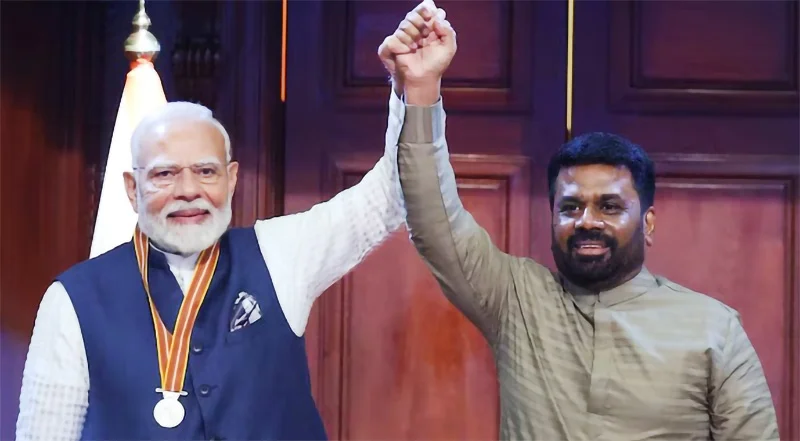
The government did everything in its power to welcome Indian Prime Minister Narendra Modi during the three days in April 4-6 he was in Sri Lanka. The country is known for its hospitality and the government exceeded expectations in its hospitality. There were children to greet the prime minister at the airport along with six cabinet ministers. There was a large banner that described the Indian prime minister in glowing terms. President Anura Kumara Dissanayake also conferred the Sri Lanka Mitra Vibhushana Award, the country’s highest award, to Prime Minister Modi in appreciation of friendship and cooperation. The role that the Indian government under him played in saving Sri Lanka from economic disaster three years ago would merit him nothing less. The gesture was not merely humanitarian; it was also an astute expression of regional leadership rooted in a philosophy of “neighbourhood first,” a cornerstone of Prime Minister Modi’s foreign policy.
India has a key role to play as a stabilising actor in South Asia, especially when regional neighbours falter under economic or political pressure. It has yet to reach its full potential in this regard as seen in its relations with Pakistan and Bangladesh. But with regard to Sri Lanka, India has truly excelled. Prime Minister Modi’s visit to Sri Lanka at this time carried symbolic weight beyond the economic and political. President Dissanayake, in his welcome speech, noted that Prime Minister Modi was the first foreign leader to visit after the new government came to power. By being the first to visit he conferred international importance to the newly elected Sri Lankan leaders. This early gesture conveyed India’s tacit endorsement of President Dissanayake’s government, an endorsement that can be especially valuable for a leader without a traditional elite background. The president also remarked on their shared political origins as both originally came into politics as outsiders to the traditional ruling establishments, creating a bridge between them that hinted at a broader ideological compatibility.
President Dissanayake showed his human touch when he first showed the Mitra Vibushana medal to Prime Minister Modi in its box, then took it out and placed it around the neck of the Indian leader. When the two leaders clasped their hands together and raised them, they sent a message of camaraderie and solidarity, an elder statesman with a long track record with a younger one who has just started on his journey of national leadership. Interestingly, April 5 the date on which the award was conferred was also the 54th anniversary of the commencement of the JVP Insurrection of 1971 (and again in 1987), in which anti-India ideology was a main feature. In making this award, President Dissanayake made the point that he was a truly Sri Lankan leader who had transcended his political roots and going beyond the national to the international.
FINDING TRUST
Six of the seven agreements signed during the visit focused on economic cooperation. These ranged from renewable energy initiatives and digital governance platforms to infrastructure investments in the plantation sector. Particularly noteworthy were agreements on the construction of homes for the descendants of Indian-origin Tamils and the installation of solar units at 5000 religious sites. Both these projects blend development assistance with a careful sensitivity to identity politics. These initiatives align with India’s strategic use of development diplomacy. Unlike China’s approach to aid and infrastructure which has been frequently critiqued for creating debt dependencies India’s model emphasises partnership, cultural affinity, and long-term capacity building.
The seventh agreement has to do with defence and national security issues which has been a longstanding area of concern for both countries. None of the agreements, including the seventh, have been discussed outside of the government-to-government level, though texts of the other six agreements were released during Prime Minister Modi’s visit. Several of the issues concerning economic agreements have been in the public domain eliciting concerns such as the possibility of personal information on Sri Lankan citizens being accessible to India through the digitisation project. However, little is known of the defence agreement. To the extent it meets the needs of the two countries it will serve to build trust between them which is the foundation on which dialogue for mutually beneficial change can take place.
In the past there has been a trust deficit between the two countries. Sri Lankans would be mindful of the perilous security situation the country faced during the time of the war with the LTTE and other Tamil militant organisations, when parts of the country were taken over and governed by the LTTE and the country’s territorial integrity was at stake. This was also a time when Indian military aircraft were deployed in Sri Lankan airspace without the Sri Lankan government’s consent in June 1987, which the Indian government justified as a humanitarian measure, and there were concerns about possible Indian military intervention on a larger scale. This was followed by the signing of the Indo-Lanka Peace Accord the next month in July 1987 which led to the induction of the Indian army as a peacekeeping force into Sri Lanka with government consent.
UNRESTRICTED FRIENDS
The history of Indian intervention in Sri Lanka’s ethnic conflict has given an impetus to Sri Lanka to look to other big powers to act as a counterbalance to India. In more recent years India has expressed its concern at naval vessels from China coming into Sri Lankan waters on the grounds of doing research which could be used against India. Sri Lanka’s engagement with China has strained ties with India, particularly when Chinese infrastructure investments, such as the Hambantota Port, appears to have the potential to serve dual civilian-military purposes. Given China’s growing global reach and its ambition to project influence through the Belt and Road Initiative, Sri Lanka’s geography makes it a critical hub in the Indian Ocean. Hopefully, with the signing of the defence agreement between India and Sri Lanka, these fears and suspicions of the past will be alleviated and soon come to an end.
The position that the government headed by President Dissanayake has taken is to be friends with all. The principle of “friendship with all, enmity with none” is not new, but the stakes are higher today, as global competition between major powers intensifies. India, by virtue of geography and history, will always be Sri Lanka’s first and most important partner. It was India, and not China, not the West, that provided an emergency economic lifeline when Sri Lanka’s foreign reserves evaporated in 2022. That support, amounting to over $4 billion in credit lines and direct aid, was delivered quickly and with minimal conditionality. It also demonstrated how regional proximity can enable faster, more context-aware responses than those offered by multilateral institutions.
The world has become a harsher and more openly self-interested one for countries, even ones that were thought to have indissoluble bonds. Sri Lanka’s biggest export markets are in the United States and European Union and it has received large amounts of economic assistance from Japan and China, though unfortunately some of the loans from China were used inappropriately by former Sri Lankan governments to create white elephant infrastructure projects. Burdened now with enormous debt repayments that bankrupted it in 2022, Sri Lanka continues to need economic resources and markets from around the world. President Dissanayake’s government will understand that closeness to India need not mean an exclusive relationship with it alone. In a multipolar world, friendship (and doing business) with all is both a virtue and a necessity. But among friends, there must always be a first —and for reasons of history, culture, religion, geography and strategic logic, that will be India.
by Jehan Perera
Opinion
Power corrupts …

Only America could re-elect an extremist like Trump.
There are planned protests across the US today against President Donald Trump and his adviser billionaire Elon Musk.
More than 1,200 “Hands Off!” demonstrations have been planned by more than 150 groups – including civil rights organisations, labour unions, veterans, fair-election activists and LGBT+ advocates.
This includes a planned protest at the National Mall in Washington as well as locations in all 50 states.
They are in opposition to Trump’s actions: slashing the federal government, his handling of the economy and other issues.
Musk has played a key role in Trump’s second administration, leading efforts to downsize the federal government as head of the newly created Department of Government Efficiency.
Organisers hope these demonstrations will be the largest since Trump came to office.
Speaking of Musk, let’s see how Trump’s second term has impacted America’s richest men …?
Countries across the globe are planning their response, or lack thereof, to Donald Trump’s tariffs.
China responded to Trump’s 34% tariff with its own levy of the same percentage on US imports.
According to state news agency Xinhua, China has accused the US of using tariffs “as a weapon” to suppress Beijing’s economy.
The country’s foreign ministry added that the US should “stop undermining the legitimate development rights of the Chinese people”.
It also warned there were no winners from and no way out for protectionism.
China also claimed that the US tariffs violated World Trade Organization rules – rules it itself has broken a number of times.
Professor Wang Wen, trade expert at the Chongyang Institute for Financial Studies, spoke from Beijing to Kamali Melbourne. He outlined why he believed the tariffs would eventually benefit China, and why Beijing would “never yield” to the US president.
“The basic strategy of China’s tariff policy against Trump is to count on reciprocal rules and defend China’s national interest and dignity. China will never yield to Trump on the issue of tariff war,” he said.
However, Xi Jinping is no democratic leader either, given to expansionism by hook or crook.
China’s booming economy has opened up many opportunities to achieve its sinister objectives – massive investments which weaker economies fall into and become easy prey.
Sri Lanka is no exception. Caught in the middle are the smaller nations who are confused and worried how best to stay alive.
Sunil Dharmabandhu
Wales, UK
-

 Business3 days ago
Business3 days agoColombo Coffee wins coveted management awards
-

 Business5 days ago
Business5 days agoDaraz Sri Lanka ushers in the New Year with 4.4 Avurudu Wasi Pro Max – Sri Lanka’s biggest online Avurudu sale
-

 Features4 days ago
Features4 days agoStarlink in the Global South
-

 Business6 days ago
Business6 days agoStrengthening SDG integration into provincial planning and development process
-

 Business5 days ago
Business5 days agoNew SL Sovereign Bonds win foreign investor confidence
-

 Sports7 days ago
Sports7 days agoTo play or not to play is Richmond’s decision
-

 Features4 days ago
Features4 days agoModi’s Sri Lanka Sojourn
-

 Midweek Review14 hours ago
Midweek Review14 hours agoInequality is killing the Middle Class



